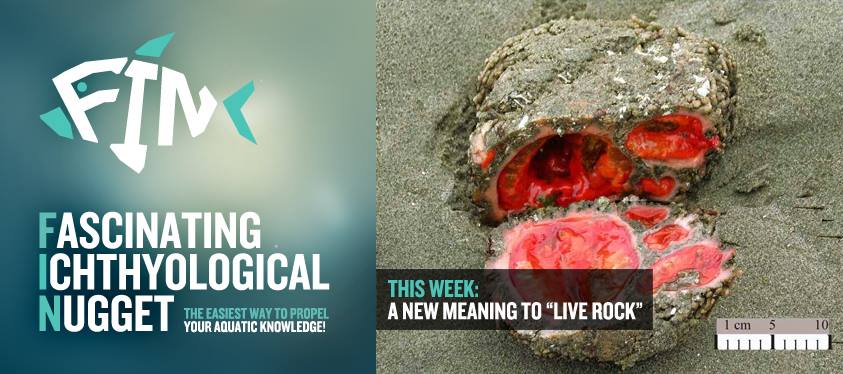Cookie Policy
We use cookies to help improve the experience you have on this site. You can find out more here.
We use cookies to help improve the experience you have on this site. You can find out more here.


While all marine fishkeepers are familiar with “live rock”, there are few that will have encountered one of the strangest animals in the sea - a creature that from the outside looks like little more than a rock. Yet beneath its stony surface is a soft centre that looks for all the world like a mass of organs.
Pyura chilensis is often found in dense groups on the rocky coast of Chile and Peru and belongs to the class of non-moving, sac-like invertebrates that are known as tunicates, or “sea squirts”. Like many other sea squirts, it is a filter feeder that eats by siphoning in seawater and filtering out microorganisms.
Every individual is born male but later develops additional female reproductive organs so as to become hermaphroditic at puberty - it then reproduces by releasing clouds of sperm and eggs into the surrounding water. It normally lives in clusters that can cross-fertilise, but if it is alone, it can procreate perfectly well by self-fertilization, creating a 'fertile cloud' of eggs and sperm that produce tadpole-like offspring that settle onto nearby rocks and grow into the adult form.
Even more bizarrely, despite its red colour, the blood of P. chilensis is clear and can contain staggeringly high concentrations of vanadium, a metallic element used in alloys to add strength, toughness and heat resistance to steel. The concentrations in its blood can be as much as ten million times higher than that found in the surrounding seawater, and scientists are as yet unable to explain why or even how this occurs. None of these oddities seem to deter the hungry people of Chile and Peru, however, where P. chilensis are fished commercially and considered a delicacy.
They might not be as generous as the easter bunny, but rabbitfish are very giving when it comes to algae control. This One-spot fox face (Siganus unimaculatus) at Reefkeeper Rugby makes a great alternative to the more active tangs but will reach a size that necessitates a spacious aquarium. Every time I write about these fishes I wonder why the old common name of Badger fish isn’t more widely used, but then the native name of Spinefoot (thanks to their stinging venomous dorsal spines) is perhaps more deserved in areas where they’re caught as food fish.
https://www.fishkeeper.co.uk/fish/marine/miscellaneous-fish/one-spot-fox-face-
For delivery before Christmas, orders must be placed on or before 3pm on Wednesday 20th December. We cannot guarantee delivery of these orders pre-Christmas as we are reliant on our couriers, but will use our best endeavours to get orders placed on this date out to you before Christmas. For full details of our festive delivery and opening times click here
Please note: online orders placed after 3pm on Friday 22nd December will not be dispatched until the New Year. For full details of our festive delivery and opening times click here